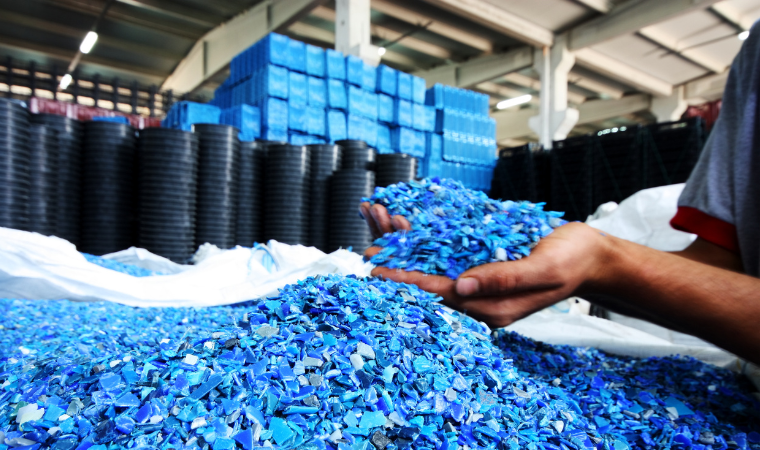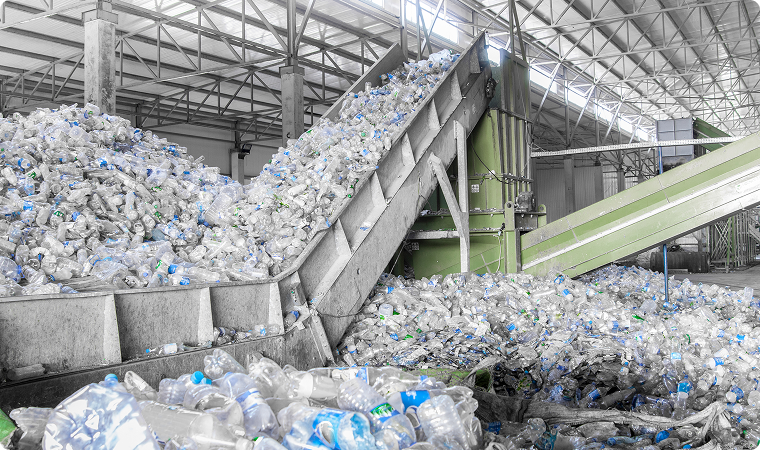The plastic industry of Bangladesh has slowly emerged as one of the up-and-coming thrust sectors of the country, driven by an increasing local demand, an upward export growth trend and strong government support. With a market size of USD 2.99 billion, the industry is only able to contribute about 1% to the nation’s GDP and employs 1.5 million people, formally and informally. The sector’s high growth trajectory is underpinned by rising per capita plastic consumption, expanding export markets and sizable investments in local manufacturing and recycling infrastructure.
Market Size & Economic Contribution
The industry has witnessed remarkable growth over the past decade, keeping pace with the use of plastic, which grows by 20% annually. Per capita consumption has also surged from 5.56 kg in 2005 to 9 kg in 2020, with Dhaka City reaching plastic consumption figures of up to 22.25 kg per capita. Despite this growth, Bangladesh is well behind the global average of 80 kg per capita, indicating a largely untapped potential in the domestic market.
Currently, the industry caters more to the local market, which accounts for 83.4% of the total, while exports make up the remaining 16.6%.1 The government, through the National Plastic Industry Development Policy 2020, aims to achieve 15% annual growth, with projections suggesting the plastic and packaging market could reach USD 10 billion by 2028 and USD 20 billion by 2030. Bangladesh's significant reliance on imported plastic raw materials, primarily polymers, underscores the sector's dependence on external inputs. In 2021, the country imported 2 million tons of plastic inputs from sources including China, Saudi Arabia, and Thailand. 1 This import dependency is largely attributable to the absence of a domestic polyolefin production facility and a consequent reliance on imports to meet polymer demand. Additionally, limitations in the domestic production of advanced, high-standard capital machinery further contribute to the sector's reliance on imports.
Employment & Industry Linkages
The plastic industry provides employment opportunities to 1.5 million people, including 0.6 million who are directly employed and the rest who work within the sector informally. Notably, 60% of the industrial workforce in toy manufacturing comprises women, highlighting the sector’s role in promoting gender inclusivity.1
The industry also serves as a critical backward linkage for numerous key sectors, including Ready-Made Garments (RMG), pharmaceuticals, Fast-Moving Consumer Goods (FMCG), food processing, and construction. Essential plastic products such as PVC pipes, polythene sheets, and packaging materials are integral to these industries, spurring demand for local sourcing of plastic goods. Additionally, this industry also supports the electronics, automotive and textile industries, supplying essential components like plastic clips and handers, buttons and electronic parts and covers.
Scope of More Exports through Product Diversification
The country’s plastic exports have been growing at an impressive rate of 4.5% annually since 2014, fetching its highest of a sum of USD 209.86 million in export earnings in 2022-23. Plastic products are exported to over 126 countries, with major destinations including China, India, the USA, and the EU.

Fig. Facts about Bangladesh Plastics Export Performance (2023-24)
Key export items include packaging materials, consumer products (i.e. tableware and kitchenware), PVC pipes, polythene sheets, and garment accessories like plastic hangers and bags.1

Fig. Overview of Bangladesh’s Plastics Export Basket / Source: EPB (2023-24)
In recent years, the domestic toy manufacturing sub-sector has emerged as a promising opportunity for exports. The local toy market is valued at USD 1 billion, with around 100 local manufacturers producing upwards of 1000+ types of toys, meeting 60% of the domestic demand. At present, plastic toys account for about USD 37.10 million, with Spain being the biggest buyer of plastic toys made in Bangladesh, followed by Italy and France.1 This shows great promise for this segment; however, there are obstacles to adhering to EU safety regulations, which are essential for increasing export volumes to Europe.
Government Support and Trade Policies
The government has enacted several policies to bolster the plastic sector. Policies such as:
- The Plastic Industry Policy 2023, includes 9 strategies to boost local industries, enhance capacity, expand global market access, and foster skill development. It also offers financial support, such as 3% interest loans for small and medium enterprises in the plastic sector. The policy aims for sustainable growth and will be implemented by 2028.
- The Plastics Industry Development Policy 2020 aims to establish Bangladesh as a competitive plastic and packaging hub in South Asia.
Through these policies, exporters benefit from a 50% tax exemption on export income, VAT exemptions on exported goods, and a 10% cash incentive on the export value of plastic products and PET bottles.1 Additionally, export subsidies are provided for specific products, such as 10% for polyester staple fiber and 5% for PET bottles.
At present, Bangladesh enjoys duty-free and quota-free access to key markets, including China, the EU, USA and Canada, under various trade frameworks like GSP, SAFTA, APTA, and BIMSTEC.1 Further boosting Bangladesh’s export competitiveness and untapped export potential.
Sustainability and Recycling Initiatives
The plastic industry has always faced growing scrutiny over environmental and climate concerns, particularly due to poor waste management and recycling. Bangladesh alone generates more than 380 tons of plastic waste daily, with only 37% currently being recycled.2 To mitigate these challenges, the government incentivizes plastic recycling via reduced income tax rates and facilitates foreign direct investment (FDI) in advanced recycling facilities. Furthermore, the export of plastic waste, parings, and scrap demonstrates a promising trend, comprising 7% of the total plastic export portfolio in the fiscal year 2023-24.
Looking Ahead towards the Future
Despite strong headwinds propelling this sector ahead, there are several challenges that need to be overcome to flourish in the global arena. Domestic producers are obligated to adhere to rigorous European Union safety protocols, especially concerning toys, to enter the highly profitable European markets. Conforming to the Circular Economy Action Plan established by the EU, the strategy endeavors to ensure all plastic packaging within the EU is reusable or readily recyclable with explicit labelling by the year 2030. The EU mandates audits for plastic recycling facilities in Bangladesh that export food-grade recycled plastic and has prohibited certain single-use plastics (SUPs), encompassing plates, cutlery, straws, and polystyrene containers. Furthermore, the sector’s continued reliance on imported raw materials, capital machinery and underdeveloped recycling infrastructure presents challenges to its enduring sustainability.
However, the outlook for the sector remains cautiously optimistic. The government has prioritized this sector and has set an ambitious target of tripling its export revenue and capturing 3% of the global plastic market share by the year 2030. These targets are supported by a strong industrial foundation: A robust network of 6,000 plastic manufacturing facilities, of which 450 are specifically geared towards export production. Additionally, the industry demonstrates versatility and adaptability by utilizing 142 different types of plastic in its manufacturing processes. This existing infrastructure, coupled with strategic planning and targeted investment, positions Bangladesh to achieve its ambitious goals and become a major player in the global plastics market.











